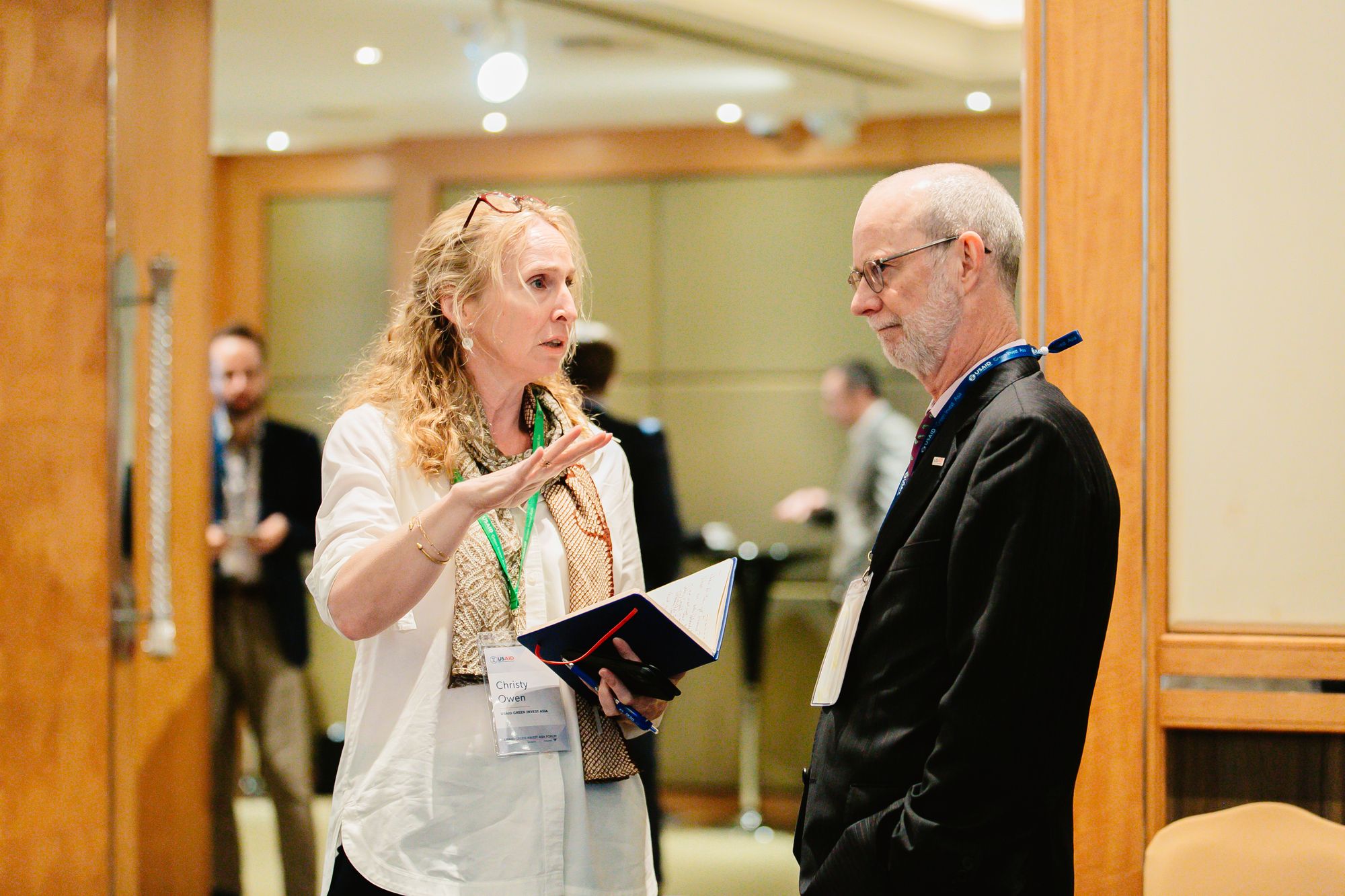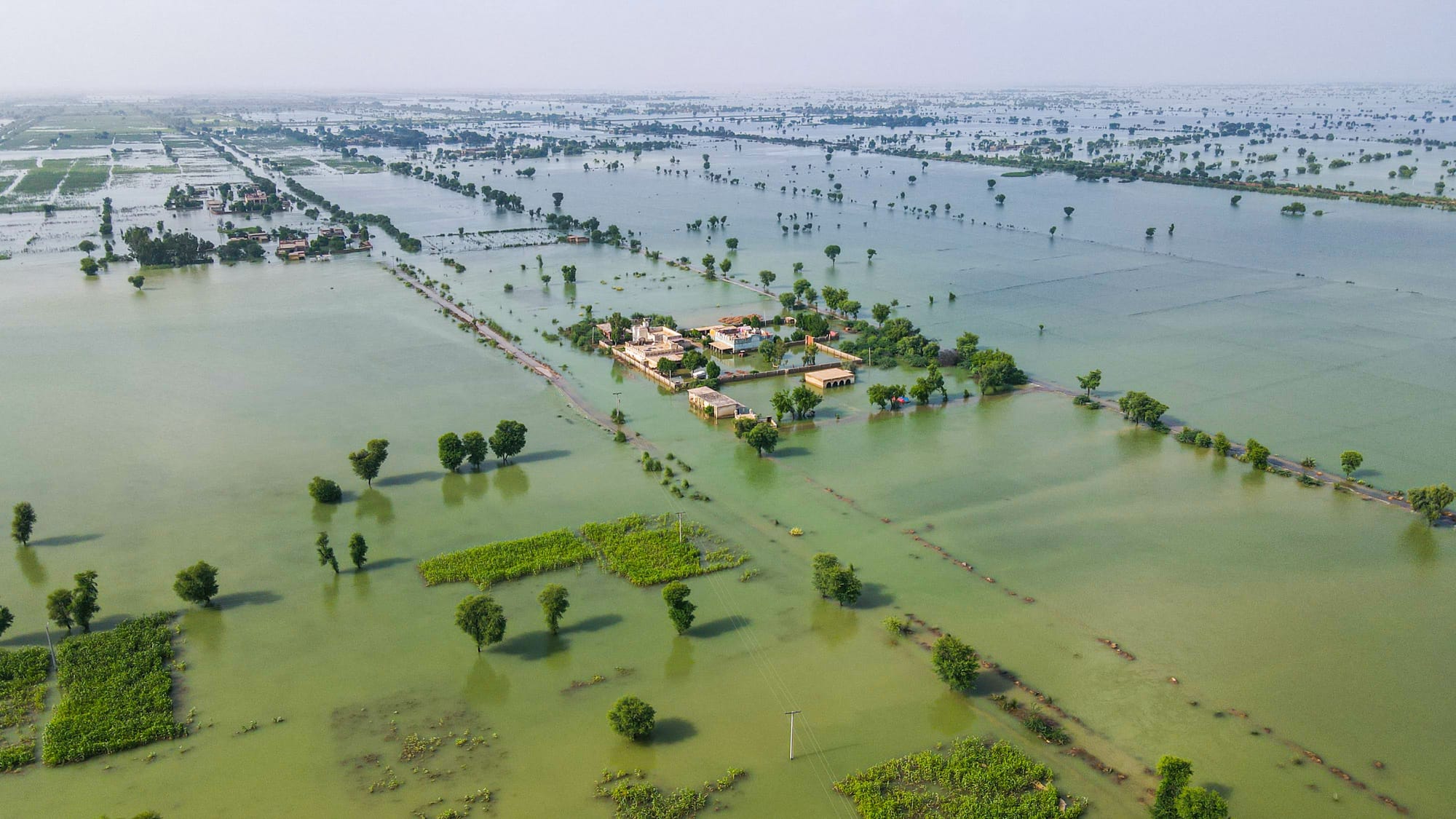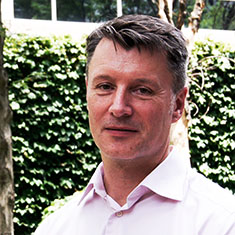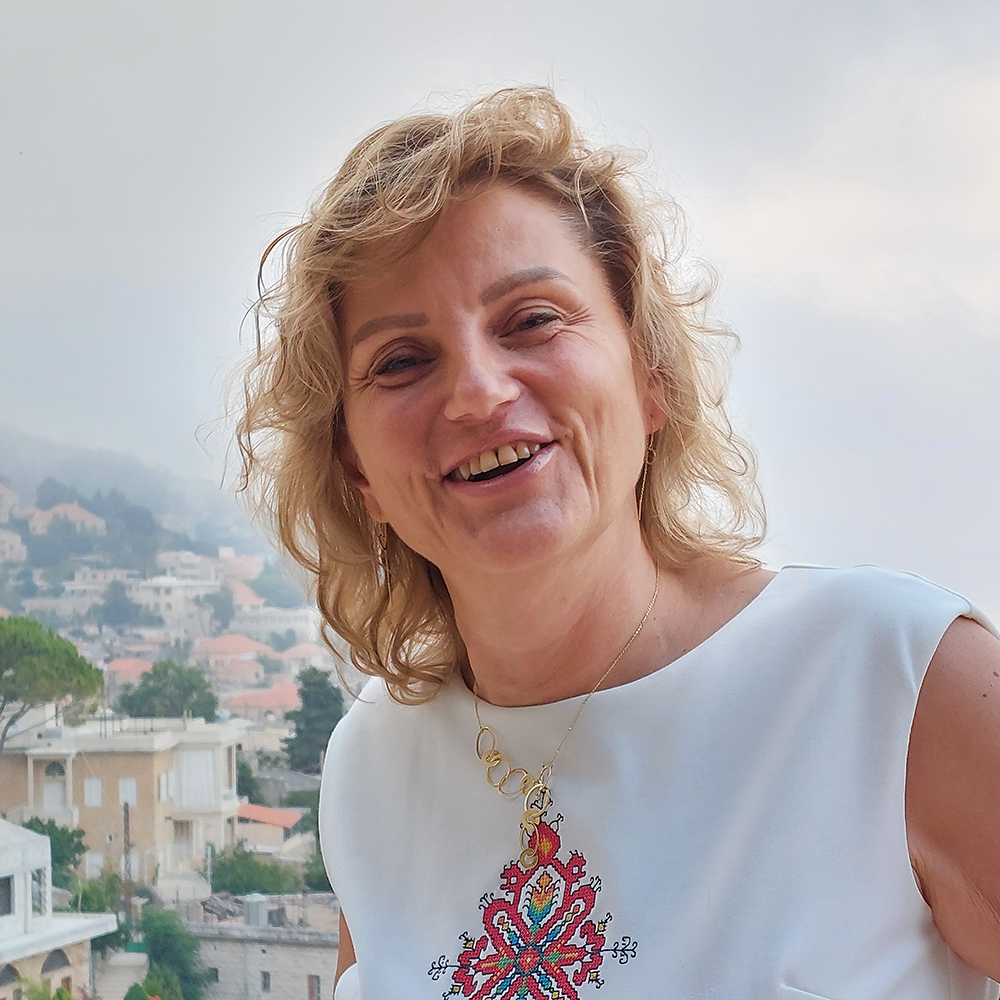Christy Owen, Senior Lead Specialist in DAI’s Climate, Land, and Natural Resources Practice, returned to DAI after a decade in Bangkok, Thailand, where she helped lead three key climate and environment programs for the U.S. Agency for International Development (USAID) Regional Development Mission for Asia. Most recently, she served for six years as the Chief of Party for USAID’s Green Invest Asia, which aimed to reduce 156 million tons of carbon emissions over 15 years and benefit local communities through the improved management of 1.7 million hectares of land. DAI spoke with Christy about the critical role of partnerships in securing climate investments.

How did you get into the field of climate finance?
I think my first real exposure to this idea—that finance can and should have positive climate outcomes—was in the early 2000s when I was traveling with a DAI colleague in El Salvador. We were visiting coffee farms to explore how the [approach of reducing emissions from deforestation and forest degradation in developing countries REDD+] might benefit farmers and the larger landscape. These were the early days of the voluntary carbon market when the idea was really being driven by nongovernmental groups and donors with little uptake to scale. Since then, I’ve continued applying a climate lens to various projects, trying to convince governments and the private sector to place economic value on natural resources and to account for externalities of business models reliant on land use. Fast forward to 2014 and I had the opportunity to lead USAID’s Green Invest Asia—a flagship regional climate finance facility solely focused on engaging with investors and companies to increase private investment in sustainable agriculture and forestry to reduce greenhouse gas emissions.
What are some of the biggest challenges for mobilizing private finance for climate-positive land investments?
There are many challenges, both on the financing side and on the project side, but I think three continuously rise to the top. One is risk appetite. Land is a risky asset to invest in due to concerns around land tenure, the potential for crop failure or fire, and exposure to claims of deforestation. Not many investors have the expertise nor comfort to pursue those opportunities. Second, there are no standard performance metrics in place and thus, there is a mismatch in what investors are evaluating versus available data collected by a company or project. This challenge is further complicated by determining appropriate metrics to determine positive climate outcomes from investments and, increasingly, other co-benefits associated with protecting and conserving nature. Finally, the rate of return on land investments is often much lower than for projects in energy, infrastructure, or transport. Financial products do not necessarily accommodate considerations specific to land, such as longer loan tenure for slow-growing crops, like tree crops. Many investors and companies agree that environmental and social benefits are important, but there must also be sufficient economic reasons to invest.
What trends in the climate finance and land use sectors are most exciting right now?
There is a lot of movement right now in the climate finance space, especially related to land use. While it is tough to keep up with the changes, it is also super exciting because there is a lot of collective thinking from financial actors, private companies, governments, and nongovernmental groups on what is needed to move from talk to action.
I am particularly interested in conversations around standards and metrics for measuring climate impacts and carbon emissions in both financial portfolios and supply chains. These conversations are incredibly important to provide tools to better design and implement systemic changes in what kinds of projects or business models are financed and what types of interventions are required at the farm or landscape level to mitigate and adapt to climate change. There is also growth of carbon markets, specifically voluntary carbon markets.
About three or four years ago, I saw a marked increase in interest from both investors and carbon developers, as well as governments, regarding the potential of carbon credits to offset carbon emissions in the short term, as well as a possible revenue stream for communities and investors. This is a new market, so there remains a lot of work to bring confidence in the marketplace to buy and sell carbon credits. While I do not think carbon markets alone will save us from the impacts of climate change, I do think they are a tool for us to properly value the importance of preserving nature in our global economy.
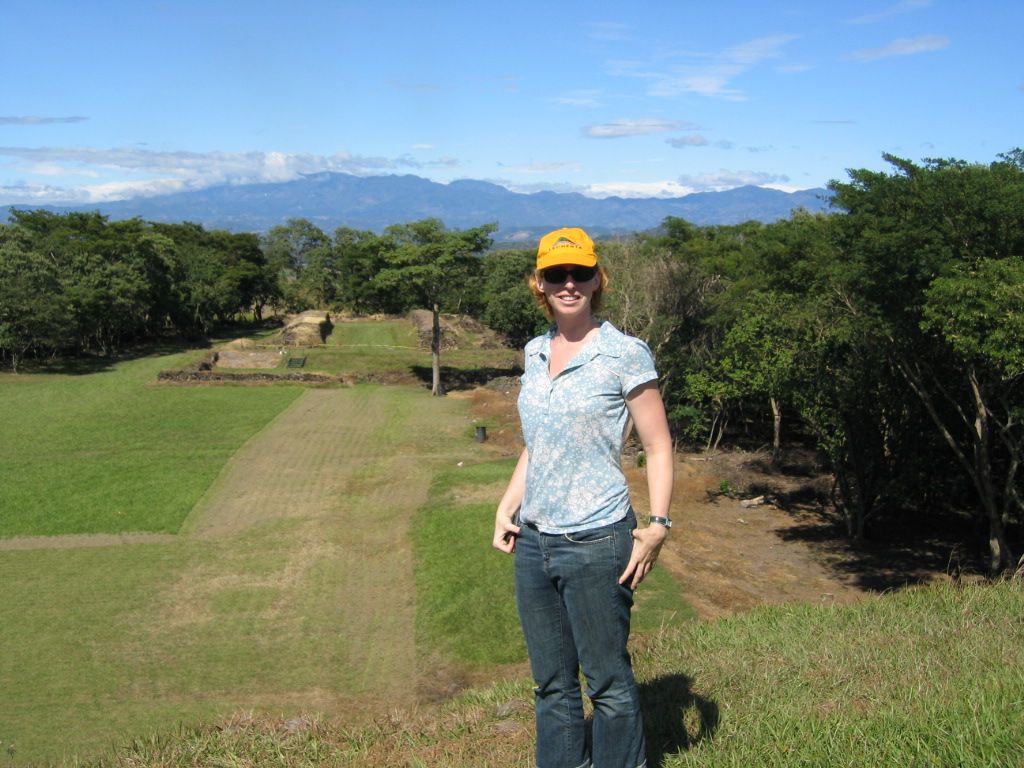
What lessons have you learned about fostering productive partnerships between diverse stakeholders (donors, private sector, civil society, government) in this space?
I find it really rewarding to facilitate partnerships among unlikely bedfellows. I so often hear some variation of “That group will never work with that other group,” or, “We tried bringing them together years ago and it didn’t work.” As the context changes, incentives for collaboration also change.
I have four lessons. First, I found that productive partnerships are more likely when there is a shared challenge that is prohibiting all parties from achieving their goals. This requires careful listening to potential collaborators to hear what motivates them and what they need. Once a shared issue is identified, this creates an incentive to come together to find a shared solution. Second, it is important to have champions who can influence and encourage others to join the effort. Third, I believe it is important to have a neutral facilitator or convener who can build trust with all parties to enable an agenda to move forward. There is a lot of work that goes into creating large, multi-party partnerships—so equal parts patience and persistence are key. Finally, once a partnership between diverse stakeholders (or competitors, as may be the case with the private sector) starts showing results, it is important that there is shared ownership to successfully achieve milestones.
How did the Green Invest Asia podcast idea come about, and why do you think it was successful?
The idea for the podcast came from the project’s communications manager. We had been thinking about how to share knowledge on all the interesting and innovative ways sustainable land use projects were being financed. We heard common messages from partners about wanting to learn what investors look for, what models work, how the finance community deals with common challenges, and so on. So, the idea was to have one-on-one conversations with investors and bankers within our network whom we had been working with to explore climate finance for agriculture and forestry projects in the region. It took some time to get off the ground, but I think we were successful for a few reasons. First, we had an established reputation as a trusted partner with several investors, so they were willing to participate. Second, Green Invest Asia was a regional project with partners based in southeast Asia and other parts of Asia, Europe, and the United States, which gave us a much wider audience. Finally, we were able to pitch the marketing potential of having a podcast that could be easily shared among investors to raise capital and showcase their own successes in a competitive market.
How can we all influence actions that make a difference in terms of reducing the effects of climate change?
I think it’s important to grasp the urgency of the climate situation. We are already seeing temperatures close to and exceeding the 1.5C goal set by the Paris Agreement. Commitments to reduce carbon emissions by 2030 mean that companies have just six years to make major shifts in their business models. They can’t do it alone. Governments must put into place policies and regulations, investors must screen investments against climate metrics, and consumers must shift consumption and use patterns. I worry that, while we search for the perfect solution, we let valuable time pass to make changes within systems that will take time to get results. The time to act is now.

